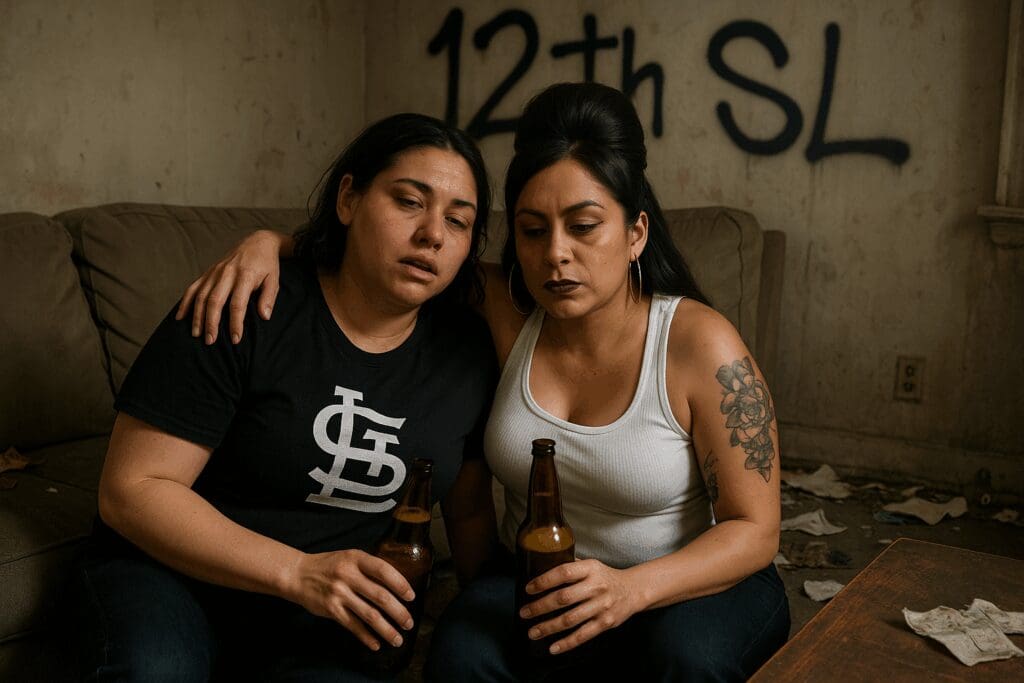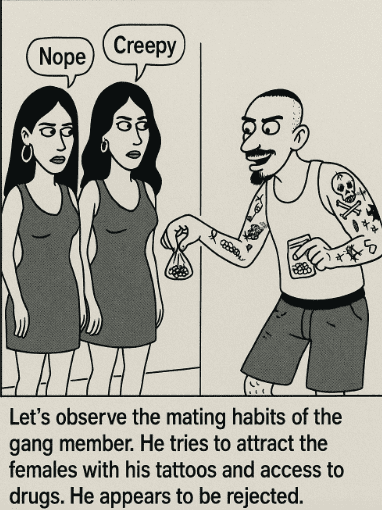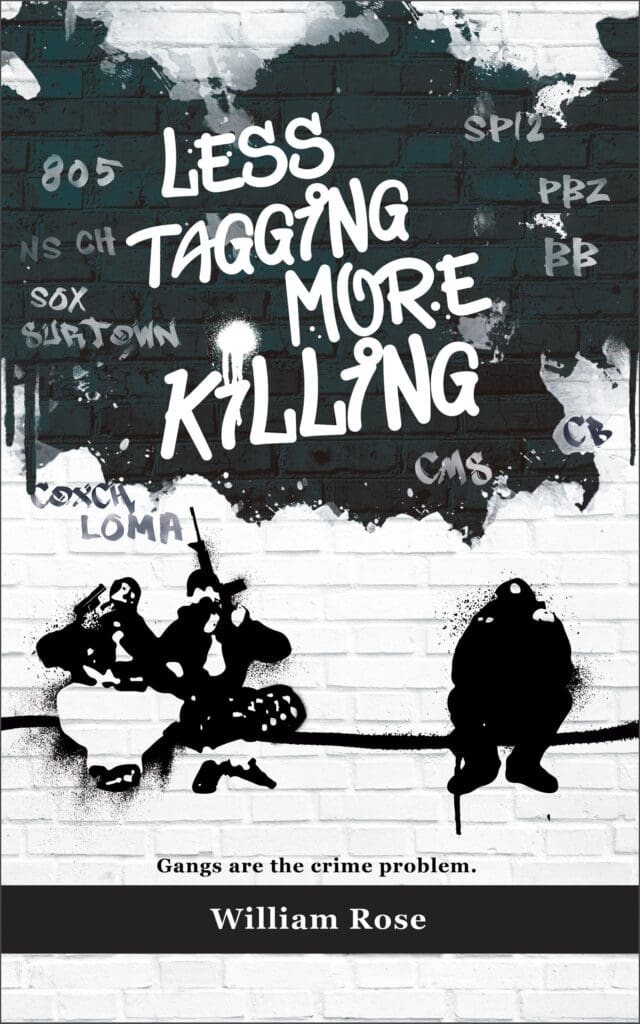Gang Initiation for Females: Brutal Truths Revealed
June 25, 2025

Gang culture is dominated by males, but gang initiation for females has a darker, often more degrading reality. While male gang members are typically “jumped in”—enduring a violent beating to earn their place—gang initiation for females can include being “sexed in,” where sex with multiple gang members acts as the entry ticket. It’s not about loyalty or courage—it’s about exploitation. And too often, it’s swept under the rug.
Female gang members I encountered in Ventura County were rare. Out of 211 identified Santa Paula gang members in 2015, only eight were female—roughly 4%. They supported the gang, participated in activities, and sometimes showed incredible loyalty.
The Psychological Manipulation
Human behavior changes in groups. That’s a truth I learned working as a Deputy U.S. Marshal in San Diego in the 1990s. Male inmates in groups behind bars became emboldened, shouting vulgarities at female deputies. Once, a female deputy challenged a group of forty inmates catcalling her. She slapped the cell cage and demanded a face-to-face challenge. No one stepped forward. They all shrank behind the group safety net. That same group behavior is central to gang initiation for females—not protection, not inclusion, but intimidation and domination.
Some female inmates, when the group got large enough, could be just as vocal catcalling male deputies. I remember a female inmate who gave me a toilet paper carnation and claimed she was a virgin—with a wink and a silver-toothed smile. She wasn’t trying to gain sympathy—she was playing the same psychological games her male counterparts played. But when it comes to gang initiation for females, the stakes are higher, and the consequences are crueler.

The authors of Freakonomics hit a nerve when they wrote that childhood poverty, single-parent homes, and teen mothers were major predictors of future crime. And the numbers don’t lie. In Santa Paula, 22% of kids lived below the poverty line in 2015. It’s in neighborhoods like this where gang initiation for females often begins—not just in alleyways or jail cells but in homes full of chaos and resentment.
The Brutal Reality of Entry
In Ventura County, I learned that gang initiation wasn’t one-size-fits-all. While males were typically “jumped in” or “crimed in” (proving loyalty through a criminal act), gang initiation for females was often transactional. I interviewed gang members who described female recruits being “sexed in”—a disturbing form of entry where consent blurred into coercion, and status was earned through submission, not strength. To learn more see the blog Why Do People Join Gangs?
Gangs do have rules: no cooperation with the police, no disrespecting other members’ girlfriends or wives, no violence in front of family. Yet these codes are rarely extended to female members. They’re more likely to be used, abused, and discarded. To say gang members are sexist is an understatement. Even when females are “jumped in,” as some are, they’re still viewed with skepticism. The message is clear: gang initiation for females never earns real respect, only conditional inclusion.
Putting in Work

Law enforcement isn’t blind to the utility of female gang members. They’re often used to smuggle drugs, guns, or information because they draw less attention. During an FBI raid in Los Angeles, two young daughters of a drug dealer screamed loudly whenever agents got close to the kitchen. The drugs were hidden under the sink, and their timed screams helped the stash go unnoticed. The father later laughed about it on a tapped phone conversation. Women and children are tools in this game, and gang initiation for females is the first step toward becoming pawns.
In another case, a female associate of a Santa Paula gang was caught recording the testimony of a cooperating witness inside a courtroom. She was so nervous the deputy spotted her from across the gallery. The gang associate wasn’t there to support a friend—she was gathering intelligence. She wanted to prove her loyalty by showing the “rat” testifier to the rest of the gang. That’s how gang initiation for females often evolves: from sex object, to drug mule, to espionage agent.
In another bust, we found a pistol sewn inside a child’s stuffed animal. The gang member denied knowing how to sew, and I believed him. It was likely his girlfriend concealed the pistol. And that’s the pattern. Women do the dirty work because they get less scrutiny. But it starts with gang initiation for females, which tells them early: your value is how you can serve the gang, not how you survive in it.
The Language of Dehumanization
Language in gang culture exposes the sexism embedded within. Females are called “hood rats,” “pin cushions,” or “ratchets”—all dehumanizing slurs that reflect their perceived worth. Gang life for women is often about surviving abuse from both rival gangs and their own. Gang initiation for females doesn’t elevate their status—it stamps them as expendable. Although some female gang member feel power from their gang affiliation. I’ve seen multiple times a female gang member text, “Don’t they know who I am? I’m royalty”. But this perceived power is illusory. Gang initiation for females creates the illusion of strength while systematically removing actual agency.
Domestic violence is a common crime for gang members. The 68 members of the Santa Paula gang the Crimies, had 50 arrests for spouse abuse/domestic violence. Consider the amount of domestic violence suffered by woman who associate with gangs. See the chart below:

Those few females who joined gangs had more in common with the so-called “white trash” community—drug use, poverty, racism, and a disdain for self-improvement. Gang initiation for females isn’t just an entry ritual; it’s often a predictor of a life of suffering. To learn more see the blog Gangs and Violence.
The Drug Connection
Ventura County gangs use drugs like candy: Norcos, Xanax, lean, cocaine, heroin, meth, fentanyl. One gang member admitted he started using at fifteen, then turned to crime to afford his addiction. That’s where gang initiation for females enters again—female addicts are easy recruits, needing money or love, often both. Drug use may dull their pain, but it also paves the way to exploitation.
In fact, drugs are a double-edged sword for gangs. On one hand, they prevent organization. On the other, they drive crime. Female gang members, often play roles in this ecosystem—moving product, holding weapons, even helping stash evidence. Gang initiation for females opens the door to a lifestyle that is chaotic, abusive, and rarely ends well. To learn more see blog Gangs Drugs: A Glimpse Into the Underground Economy of Crime.

Racist Tendencies
Racism is another factor. Ventura County gangs don’t accept outsiders. They particularly loathe Black people. The “n-word” is common in their speech and their posts. One gang member said they’d allow white members, but only if they were local and preferably half-Mexican. But even then, those members weren’t Surenos in prison. As for women, gang initiation for females never earns them full respect—only temporary inclusion.
I interviewed a female gang associate. She and her gang boyfriend were walking to a bar. Her boyfriend got into a fight with a – she started to say n-word and then corrected herself and said a Black guy. The Black guy got on top of her boyfriend; she said she had to do something so she took off her high heel and began to hit the Black guy in the head with her shoe while yelling, “Stop n-word!” The local police arrested her, and she was ultimately convicted of a hate crime because she had yelled the n-word during the assault.
The Cycle Continues
Poor decisions fuels it all. Gang members live in filthy homes, wear flashy clothes, and rarely hold jobs. Still, gang initiation for females finds traction in these environments where joblessness, government assistance, and fatherless homes are the norm.
I once met a gang member in Santa Paula with eight kids by seven different women. None of the mothers seemed concerned when the police showed up after a drive-by. That’s the culture these kids are born into. And for the girls in these environments, gang initiation for females is often their first rite of passage.
And let’s not forget the idiocy of it all. Joining a gang is a terrible life decision. None of these guys—or girls—are curing cancer. They gamble with their lives for a neighborhood they don’t even own. For women, gang initiation for females doesn’t just mean violence and sexual abuse—it means a lifetime of risk with no reward. I heard a local detective say if females rejected gang members there would be no gangs.

Wrath
Sometimes, female gang members/associates cooperate with law enforcement—not out of moral awakening, but revenge. One female gang associate admitted to detectives that after learning her gang boyfriend cheated, she performed oral sex on another man, rubbed his genitals on her face, then insisted her boyfriend kiss her cheeks. She provided information to the police about the gang and specifically when her boyfriend sold drugs.
One Ventura gang member told me the women “caused more problems than they were worth,” mainly because of sexual relationships with rival gang members.

The Path Forward
In conclusion, gang initiation for females is not an issue of parity. It’s not about earning stripes or joining a brotherhood. What it’s really about is exploitation, control, and sexual politics. It’s about being useful, not equal. And until society recognizes the specific abuses women face in gangs, we’ll continue to ignore the problem.
Gang initiation for females isn’t just another crime statistic. It’s a pathway to understanding how criminal organizations operate and exploit vulnerable populations. What makes gang initiation for females so insidious is its silence. There are fewer female gang members, so law enforcement training often overlooks their unique roles.
To learn more about Gang Initiation for Females, get the book Less Tagging More Killing.
